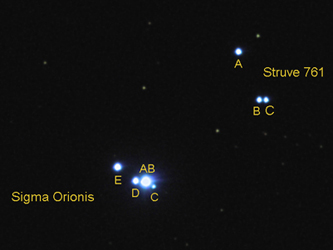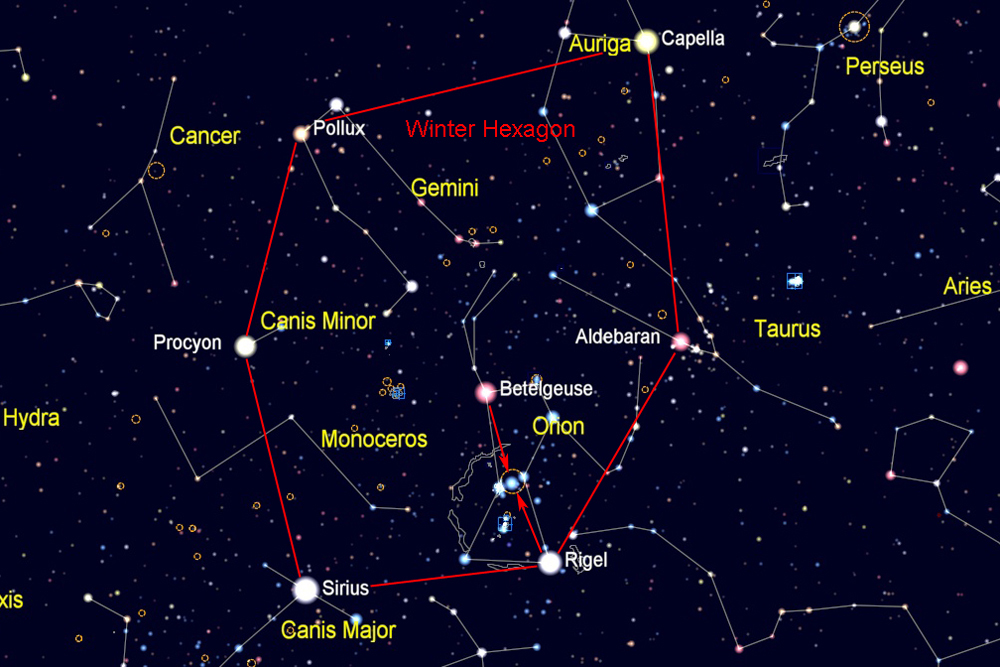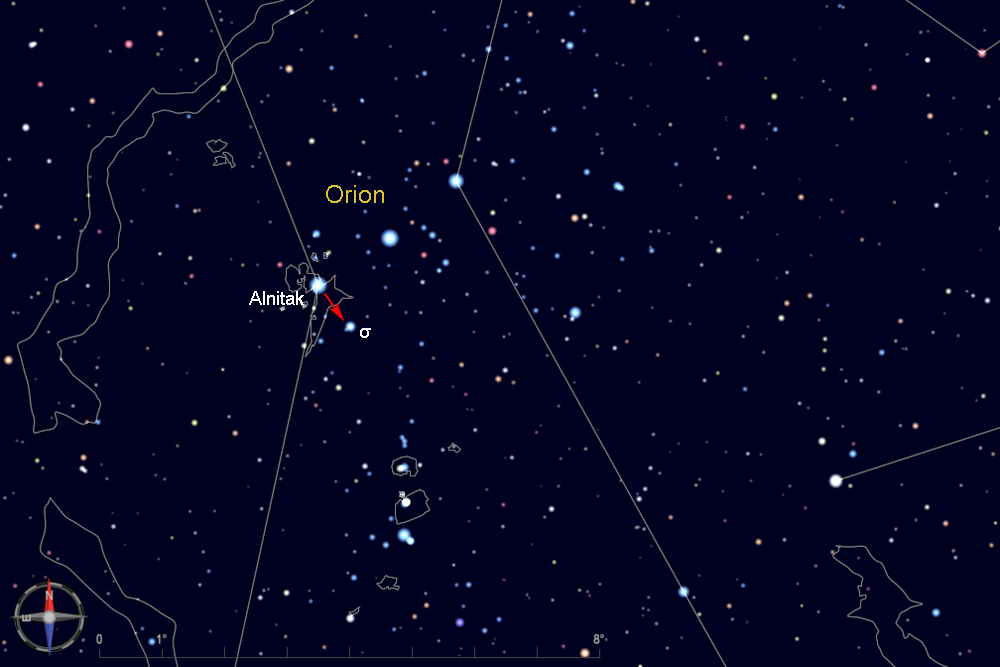
If you don't know how to find the constellation Orion, first find the Winter Hexagon, which is composed of six of the brightest stars in the sky--Sirius, Procyon, Pollux, Capella, Aldebaran, and Rigel. On mid-winter evenings, these stars form a large oval stretching from low in the south to nearly overhead. As spring begins, the Winter Hexagon sinks toward the west. The constellation Orion and its bright red star Betelgeuse are inside the Hexagon.
Between Betelgeuse and Rigel is a row of three bright stars that form the belt of Orion.

Look about 1 degree below Alnitak, the left (eastern) star of Orion's belt, and you should see Sigma Orionis (σ) with the naked eye, since it is magnitude 3.8. Aim your telescope there. Use higher magnification if you have trouble seeing the four stars of Sigma or the three of Struve 761.
